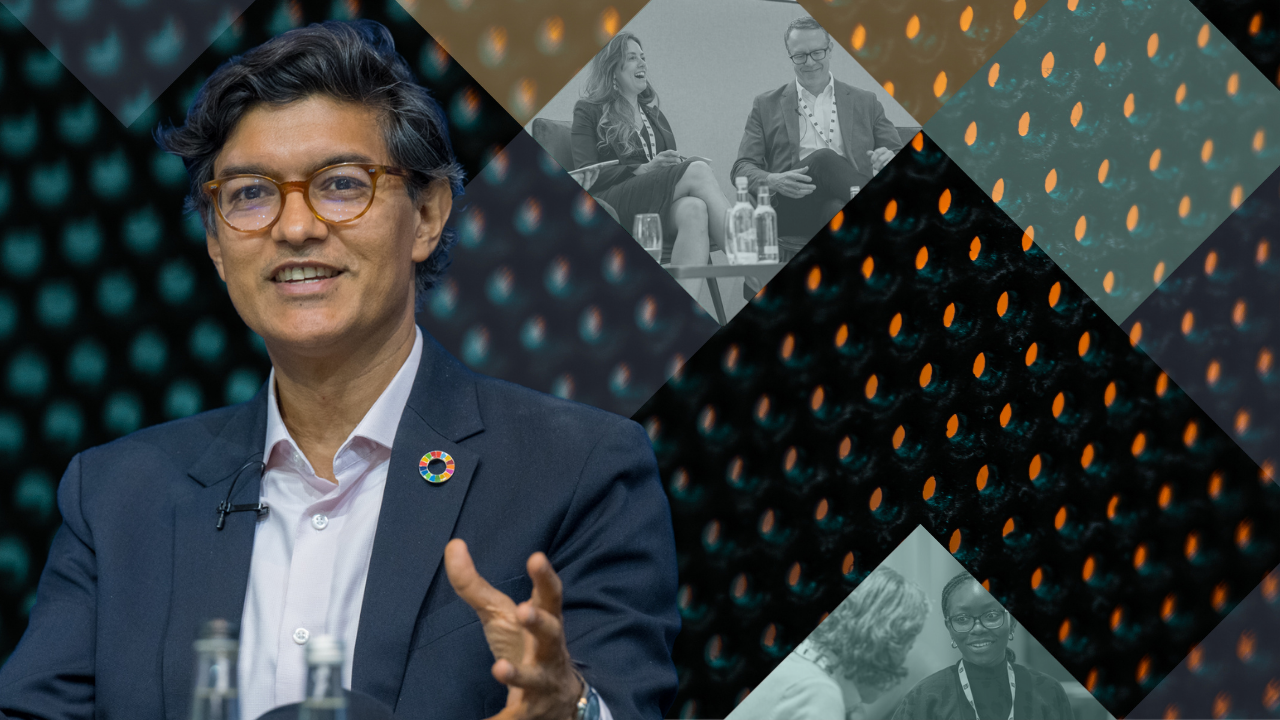‘I’m a bit of a Luddite, equally as happy doing work in the garden as in front of a computer,’ quips Matt Sonefeldt on his daily commute to LinkedIn’s Mountain View campus. The IRO of four and a half years is speaking from his car – where he reportedly conducts 80 percent of his investor and analyst calls – explaining how his passion for investing and his past experience as a volunteer teacher led him to join and shape the IR department of a Silicon Valley success story.
|
IRO Matt Sonefeldt and CFO Steve Sordello |
Consumer platform
‘I love investing and I believe in investing in traditional equity,’ he says about his early career choice of working for fund house Capital Research. ‘I think business can create positive outcomes in the world and has a responsibility to do so. So when I was looking for a company to work for, I wanted one that was early in its life cycle and was mission-driven but also had a lot of the attributes that would make for a terrific long-term investment.’
Sonefeldt spent a year on a Native American reservation in eastern Washington helping children understand the basics of reading and math as part of AmeriCorps, a federal community service program. ‘The experience actually helped me think about how education is portable in other forms, especially the business form,’ he says. ‘So often people don’t get the right context to understand the decisions they need to make, or how business and company basics work.’
This may explain why Sonefeldt feels the IR function has an education mandate as far as building relationships with LinkedIn shareholders is concerned. Indeed, the team has rebranded itself as the department of investor education. The award-winning team – which has twice won the IR Magazine Award for most progress in IR since the firm’s 2011 IPO – has doubled in size over the last year and a half thanks to a new internal rotation program. There are two full-time associates in addition to Sonefeldt, both chosen from the investment world for their ability to ‘approach the business as generalists,’ he says. ‘I think from an earlier company and life cycle perspective it’s been helpful to have that investor/owner perspective and understanding.’
A most welcome upside to the department’s larger headcount has been slightly less traveling for the chief IRO. The team hits the road once or twice a quarter with at least two yearly international trips. In 2015 it spent a week in the UK ‘where a lot of our non-US ownership resides’ and a week in Hong Kong and Singapore, where the team also participated in a conference. ‘It gave us the opportunity to showcase our head of China to the investment community,’ Sonefeldt says. ‘A key part of both non-US trips for us was to ensure we were spending time in our regional headquarters.’
Sonefeldt says half of any trip will usually be investor-oriented, the other half more internally focused, to help local employees better understand ‘the broader global sensitivities and strategies of the business. You can sometimes feel like you’re a little farther away if you’re sitting in the Dublin or Singapore office.’
Asked what investors and analysts are most interested in when talking to him or senior management, Sonefeldt says the queries have not varied much over the public life of the company. Questions frequently relate to the core hiring business, a large, fragmented and not well-understood market ‘where few companies have had large scalable success,’ he details. ‘We’re also bound to invest very aggressively so there’s more conversation about the future than about today.’
‘LinkedIn is an enterprise company on a consumer platform, so we have large opportunities across all our revenue streams,’ explains Steve Sordello, CFO of LinkedIn since 2007. ‘Investors are keen to better understand our business model, each revenue stream’s potential, how our consumer efforts and platform link to our long-term value potential and how we plan to execute on that potential.’
Sonefeldt says the business faced adversity in its hiring business after the sales force was reorganized, creating some short-term disruptions with customers. ‘There are also secular shifts in online advertising,’ he adds. ‘Part of our ad business benefits from that but another part was hit more negatively than we had anticipated in 2015, so those have been consistent conversation points.’
Because of the fast-evolving nature of technology, the investment landscape tends to be shorter term than in other industries, Sonefeldt continues. ‘Balancing nuances in the results can be difficult and there’s a lot of volatility from both a stock price and perception standpoint,’ he says. ‘Our challenge is explaining to investors that we remain true to our strategic orientation and then helping our leadersand employees see through those sensitivities so they can stay focused on the long-term dynamics.’
|
Overview of the educators Matt Danziger joined the investor education team in July 2012. Prior to this, he was an equity analyst for JMP Securities, chief compliance officer and analyst for Matthes Capital Management and an associate for Sun Valley Gold. He graduated from Colby College. Kristin Altorfer, a Stanford MBA graduate, was previously vice president of research at New York-based Chilton Investment Company. While attending business school, she also completed a finance internship with Nike in its global retail division. Lucy Chen joined the team in August 2015 as part of LinkedIn’s two-year rotational leadership program, after previous postings in the finance team for global sales and in business operations for product monetization. |
Open feedback loop
To help with this, the department provides a monthly update covering how LinkedIn is being talked about from a capital markets perspective, the latest ownership metrics and feedback from investors.
‘You’re representing the voice that most people don’t necessarily otherwise hear and you want to bring the expertise it represents in your end-markets into the business,’ Sonefeldt says. ‘That’s the kind of long-term owners’ perspective we bring to the table and how we add value to the company.’
The investor education team has a running dialogue with the CEO and CFO, he adds, describing the relationship as ‘casual. If I hear something or have an idea, I’ll fire off an email or message – on LinkedIn, of course – or pick up my phone. We have a very open feedback loop.’ He is also appreciative of the seat his team has at the table during strategic reviews and the annual planning process. ‘We get to ask questions around the strategy of the company and how it’s progressing,’ he says.
Another valuable asset is the input from the finance head, who is very much involved in helping craft the company message. ‘That’s key because our investor message isn’t separate from our overall message,’ Sordello points out. ‘I have several IR responsibilities as LinkedIn’s CFO and overall my goal is for investors to understand how our strategy links to our financial returns over the long term.
‘A lot of people assume we measure our performance based on how much time members spend on the site, but it’s quite the opposite. We want members to come to LinkedIn and get professional insights that help them do their job better.’
Reverse outreach
A similar approach is applied to how the CFO spends his time on IR tasks. ‘I focus my time on the highest-value IR opportunities, like meeting one-on-one with investors that are invested long term in LinkedIn and understand our business, industry and opportunities, to give them greater insight,’ says Sordello.
‘I think having people on campus is the best-quality experience,’ echoes Sonefeldt. First there is the quarterly event where major investors are invited to spend a day on site. ‘It’s fully Reg FD-compliant and it creates this wonderful, intimate dialogue between our leaders and owners,’ Sonefeldt continues. ‘We’re planning on making it a little larger so we get a littlemore leverage from the time invested.’
There are also many individual analysts, groups and bus trips passing through the firm’s headquarters. The investor education team attempts to offer visitors some interaction with the operational side of things, providing a setting that’s much more comfortable for top executives than regular corporate access events. ‘It doesn’t feel rushed like a conference, and we can make our leaders available more broadly here at the company,’ Sonefeldt says.
He describes the company’s outreach efforts as ‘reverse targeting’, thanks to an overall robust awareness of LinkedIn and its 55-strong analyst coverage.
‘We don’t usually have a war room with computer screens and [a list of all] the companies we’re going to talk to,’ Sonefeldt jokes. ‘Our job is making sure we have the right conversations with the people who want those conversations, rather than proactively trying to strengthen the ownership structure.’

Education technology
LinkedIn’s investor outreach increasingly relies on technology, with two main issues surfacing, Sonefeldt says: ‘One is the new customer relationship management system we’re implementing for the 400-500 investors we interact with each quarter.’
The investor education team stopped being active on StockTwits as retail ownership is relatively low, and there is no more live tweeting of earnings releases, though results are still announced ‘as a corporate event’ from the company’s main Twitter account. ‘We always draw a line of not being too active in a social media context because we don’t want to be looking like we’re trying to promote the stock,’ Sonefeldt stresses. ‘We’re not promoters – we’re educators.’
He says the other big piece of technology the team’s focused on is ‘creating a website that can be an education tool for both our IR audience and employees.’ The site, which should launch this year, will pool all IR-relevant content with the aim of becoming a ‘self-service’ place for learning about the corporate story and strategy. ‘As we would do in investor conferences, we will have interviews with key leaders across the firm to help people understand our plans in different areas,’ Sonefeldt says. ‘We’ll also start including interviews with our CFO and create FAQs around hot-button issues.’
He recalls a recent dinner conversation with a major investor about a market leader in auto insurance. The shareholder pondered whether the insurer was a viable, 10-year-horizon investment. ‘Did you know Teslas can drive themselves on freeways?’ the investor asked. ‘Are people really going to need individual insurance policies?’
‘Tesla is not an internet firm, but it is using technology to dramatically change its products,’ says Sonefeldt. But even traditional value investors need to ask one critical question, he adds: ‘Is the competitive model of this company I’m investing in going to be hit in any negative way by technology?’
|
LinkedIn’s advice for new CFOs LinkedIn CFO Steve Sordello has some advice for newly appointed finance chiefs. Tech CFOs in particular ‘need to be able to adapt to constant change,’ he says. Speaking more generally, he recommends CFOs focus on being more data-driven and improving soft skills. ‘The CFO is one of the few roles in the company that focuses on the overall system,’ he explains. ‘Being data-driven helps CFOs make objective decisions that set the company up for long-term success, and having strong soft skills helps them navigate the relationships necessary to execute those decisions.’ |
This article appeared in the Spring 2016 issue of IR Magazine








